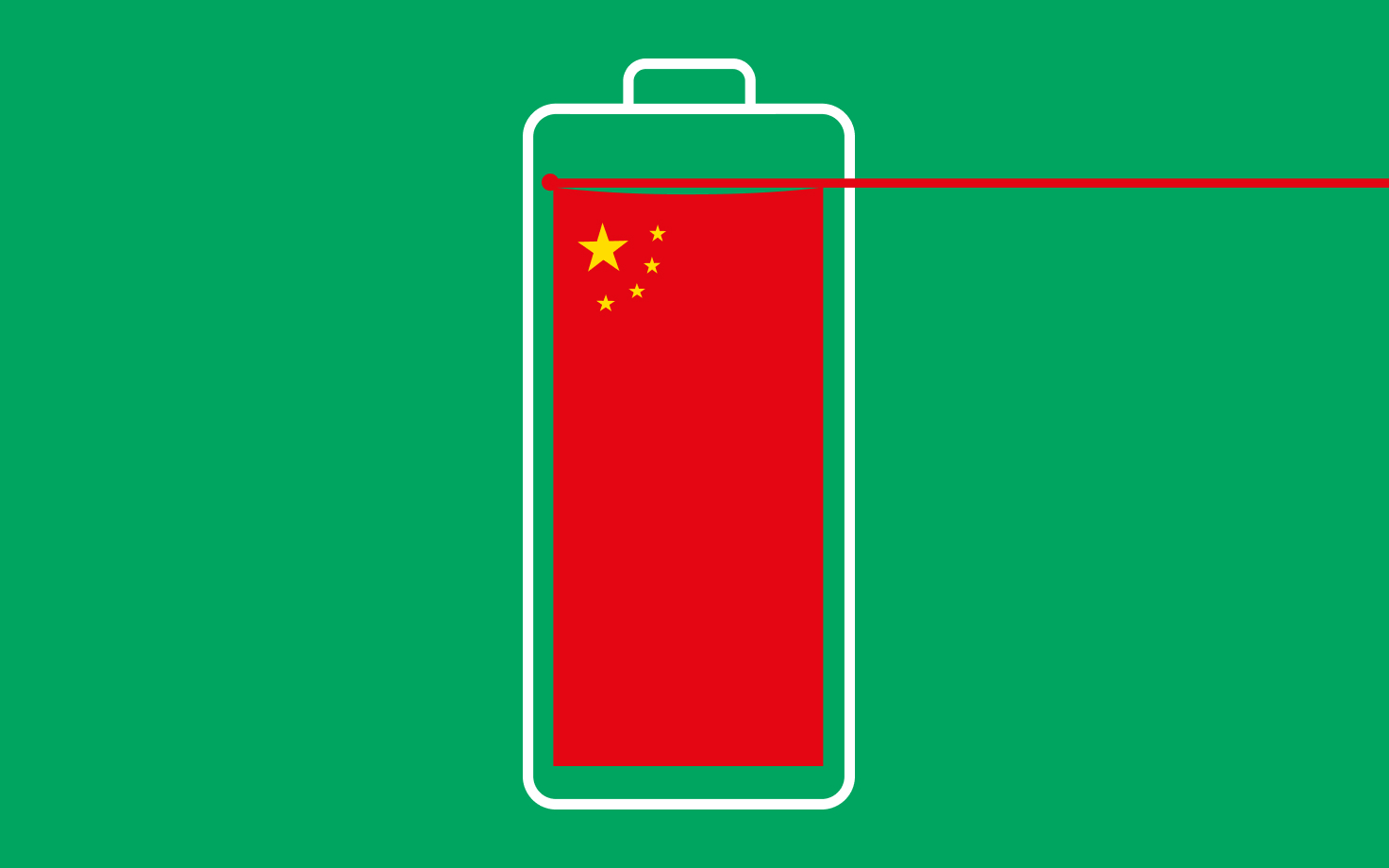Alex Wang landed in Beijing after nearly four years away and did what he’d always done: hailed a taxi.
But this time, the vehicle didn’t rumble. It whispered.
Four years before, horns and exhaust filled the streets, a metallic tang in the air. Heat from idling engines radiated through crowded intersections.
“It was startling how many electric vehicles were now on the streets of Beijing. The entire taxi fleet, it seemed, had been converted to EVs,” Wang said of his post-COVID return to China in 2023.
Wang had left behind a city yet to embrace electric transit. After four years away, the hum of an electric motor carried him through rush-hour traffic in near silence. It was now easier to call up an electric vehicle in Beijing than in most U.S. cities. Although the plug still drew power from coal, the scale of China’s push placed it miles ahead on one of the most critical climate strategies.
Fourteen years earlier, Wang had been on the other side of the climate story, watching China get scolded at the 2009 U.N. Climate Summit in Copenhagen. Back then, as a lawyer for the Natural Resources Defense Council, he sat in rooms where China was cast as a blocker.
China had recently become the world’s largest emitter of greenhouse gases, but it argued that the legal and moral burden lay with developed nations. The United States, Chinese negotiators pointed out, had far greater historical and per capita emissions than China. The meetings limped to a weak deal, and the conventional wisdom hardened: that the United States prodded and China resisted.
“What I was seeing, as someone who was working in China at the time, was that China was beginning to take the environment more seriously,” Wang said. “So, we were there to factually say, ‘Look, this is going on. Let’s not make this an excuse for inaction from the United States.’”
China moves ahead
In the years since, that stance has flipped such that China now is seen by some as moving faster than the United States on green technology — while the United States increasingly stands out as a global outlier against targets that every other Paris Agreement signatory accepted, such as tripling renewable energy capacity by 2030.
What happened between those rooms in 2009 and that curb in 2024 is the spine of Wang’s warning.
Two decades ago, Beijing cast clean technology not just as pollution control but as industrial policy — a path to energy security and national strength. In succession came a renewable energy law in 2006; a long-term strategy in 2010; the “strategic emerging industries” push; then the Made in China 2025 program.
Wang first traveled to China in the early 1990s to teach in Wuhan. After law school, he practiced in New York before moving to Beijing as a Fulbright Fellow and later as a lawyer for the NRDC — working alongside Chinese lawyers, activists and officials. He returned to the United States in 2011, teaching first at UC Berkeley and then at UCLA, where he now holds the Walter and Shirley Wang Chair in U.S.-China Relations and co-directs the UCLA Law School’s Emmett Institute on Climate Change and the Environment.
For Wang, the first sign that China was taking the environment seriously came in 2006, when leadership issued “hard targets” for pollution cuts — backed by local official performance metrics. It was messy at first, but it stuck, expanding with each subsequent five-year plan.
Wang recalls visiting inefficient coal plants and chemical factories two decades ago that barely had pollution controls — a stark contrast to today’s sprawling solar farms and robot-driven EV factories. Although by no means perfect, China’s environmental enforcement has nonetheless strengthened, and the country now leads the world in advanced manufacturing of EVs and batteries.
“China is still thought of as a place for low-end, dirty manufacturing,” Wang said. “People don’t realize that China is operating at the technological frontier in many areas of clean technology.
“You might visit an electrical vehicle company,” he added, “and you might be shocked at how advanced it is. It’s these very modern, robot-driven facilities that are churning out very modern, good-looking, high-quality products. They’re not what you would have seen 20 years ago, which were a lot of low-end factories making steel and cement in a very dirty way, without much concern for the environment.”
President Joe Biden’s administration delivered the Inflation Reduction Act — its centerpiece climate law — along with the CHIPS Act, to boost domestic semiconductor manufacturing, and the Bipartisan Infrastructure Law, to modernize roads, bridges and public transit.
Together, they represented an industrial policy bet that the United States could meet climate goals by jump-starting a green economy.
Then came the reversal, Wang said: rhetoric painting renewables as a “green scam” and a systematic lessening of support from the Donald Trump administration, which pulled the U.S. out of the Paris Agreement, halted offshore wind permits and rolled back subsidies for electric vehicles, charging infrastructure and other clean-energy projects.
Policy whiplash has left the U.S. stumbling while China surges ahead. Offshore wind tells one part of the story: China commands nearly half the world’s capacity; the United States barely scrapes 0.2%.
“It’s now dawning on the United States that we are about 10 to 20 years behind,” Wang said.
For him, the EV cab at Beijing Capital International Airport was not just a travel detail. It was the payoff of a long game, as Chinese leaders positioned themselves to take advantage of once- in-a-lifetime technological shifts necessitated by global environmental problems.
This was a sharp break from two decades before, when Wang had often heard officials insist that China was still too poor and too focused on growth. Change accelerated under Chinese President Xi Jinping, who elevated “ecological civilization” into party ideology and policy.
“Suddenly, in a span of a few years,” Wang said, “I would be going to meetings with prosecutors or judges or other types of people who had never been very interested in the environment before.
“Suddenly everyone was acting like they had always been the biggest environmentalist in the world. … You speak in the language of the bosses, and now the language of the bosses was green.”
Wang’s upcoming book, Chinese Global Environmentalism, due later this year, will examine how China’s environmental strategy has evolved — and what that evolution means for the United States.
The costs of isolation
“The U.S. is increasingly walling itself off from Chinese technologies, like Chinese EVs,” Wang said, “whereas Europe is trying to say, ‘We still support climate action, and we know that to do it cheaply and affordably, we’re going to have to have some Chinese product.’”
Europe’s approach — what Wang calls “de-risking” — keeps guardrails up. Tariffs, carbon border taxes and rules designed to keep domestic startups alive act as cushions. But Europe is also courting Chinese manufacturing, much as the U.S. once persuaded Japanese automakers to build cars in this country, bringing the jobs and supply chains home.
“China’s actions have produced renewable energy technologies at a scale and price that have accelerated global decarbonization,” Wang said.
The competition isn’t confined to cars or solar panels. Beijing is pouring resources into technologies meant to dominate the next energy era, from grid-scale batteries to green hydrogen that could replace coal in steelmaking.
For Chinese leaders, these are calculated bets backed by decades-long industrial policy, designed to lock in supply chains, export markets and political goodwill abroad.
Chinese firms now control more than 80% of solar manufacturing, nearly 80% of lithium-ion battery supply and about 60% of global EV sales. In green hydrogen, they’ve already installed twice the electrolyzer capacity of the rest of the world combined.
“Green technologies have become an important contributor to GDP growth,” Wang said, “and an essential component of Chinese exports.”
Somerset, Massachusetts, once banked its economic future on a hollowed-out coal plant. Local leaders pinned their hopes on a $200 million offshore-wind cable factory to revitalize jobs and community stability. But with permitting delays mounting and a change in federal policy priorities, the project collapsed just days before Trump’s 2025 inauguration — a reminder of what happens when local livelihoods meet policy whiplash.
On the flip side, in China’s Jilin province, a $584 million green hydrogen-to-methanol facility is operating, according to Hydrogen Insight, a news site covering the global clean hydrogen industry. Backed by a 3-gigawatt solar and wind array, it’s slated to produce 119,000 tons of e-methanol annually.
“We are on the cusp of a new era,” said U.N. Secretary-General António Guterres of the Chinese facility.
Wang doesn’t hedge.
“We need an immediate rollback on all of the barriers to renewable energy development, and a restoration of all of the subsidies, and policy support to push that forward,” he said.
Wang doesn’t hedge about geopolitics either.
Could climate action become a soft-power tool for China?
“It already is.”
At the Beijing airport, the EV taxi’s quiet hum was more than a novelty. It was the sound of two decades of uninterrupted policy.
Wang’s worry is simple: If the U.S. keeps slamming on the brakes, the next ride into the clean-energy future is likely not in an American car.

























